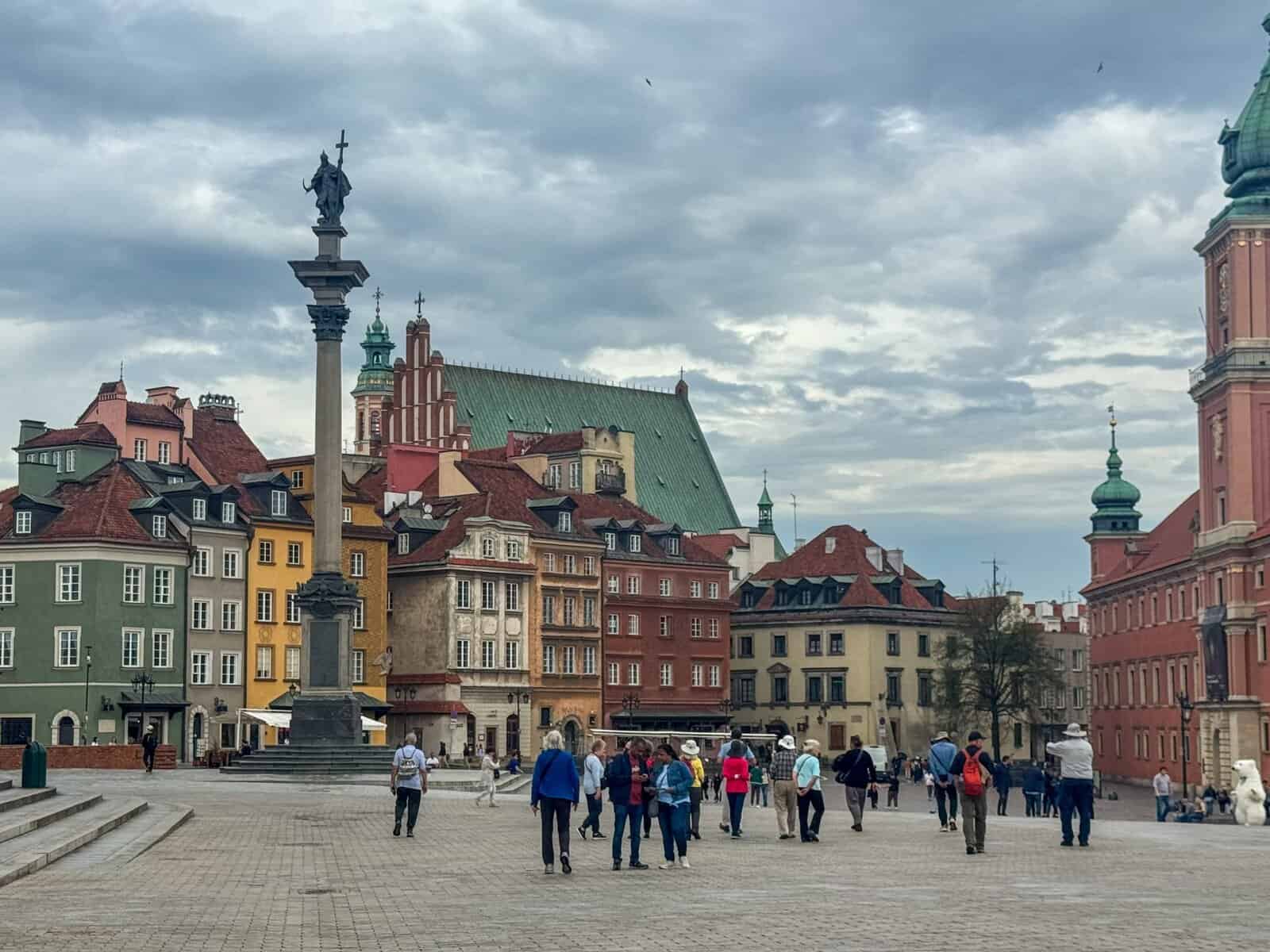9 Best Things to Do in Warsaw
Freedom Years Travel contains affiliate links. If you make a purchase using one of the links below, we may receive compensation at no extra cost to you. We only recommend products and services we use and trust. Read our disclaimer for more information.
Planning a trip to Warsaw and wondering if it’s worth your time? This guide highlights nine of the best things to do in Poland’s capital—drawn from my own experience as a first-time visitor. After five days in the city, I’ve chosen the places that stood out most, from iconic landmarks to a few unexpected gems.
Warsaw might not win you over instantly like Kraków or Gdańsk—but give it time, and it will. Its wartime scars run deep, yet this is also a city of green parks, top-tier museums, and a bold, evolving food and arts scene. Visit in summer and you’ll find the streets alive with Chopin concerts, outdoor jazz and cinema, and food festivals.
Whether you’re planning a short stay or something longer, this post will help you decide what to see—and perhaps change the way you think about Warsaw.
What is Warsaw famous for?
Warsaw is best known for its resilience. No other Allied city experienced such widespread destruction during World War II. By 1945, nearly 85% of the city had been reduced to rubble—not only by bombs, but by a deliberate Nazi campaign to wipe it from existence after the failed 1944 Warsaw Uprising.
That uprising—led by the Polish resistance—was the largest of its kind in occupied Europe. For 63 days, civilians and underground fighters fought to liberate the city before the Soviets arrived. The odds were impossible, the consequences brutal, but it remains a defining moment in Polish history.
What followed was equally remarkable. The destruction was so complete that officials debated whether to rebuild at all—or move the capital elsewhere. In the end, entire neighbourhoods were reconstructed brick by brick, using old paintings and photographs as reference. Warsaw’s UNESCO-listed Old Town is the most visible symbol of that effort.
Today, the city is also known for Chopin, communist-era architecture, leafy parks, and a flourishing food and culture scene. But above all, Warsaw tells the story of a nation that refused to be erased—and that legacy stays with you long after your visit.
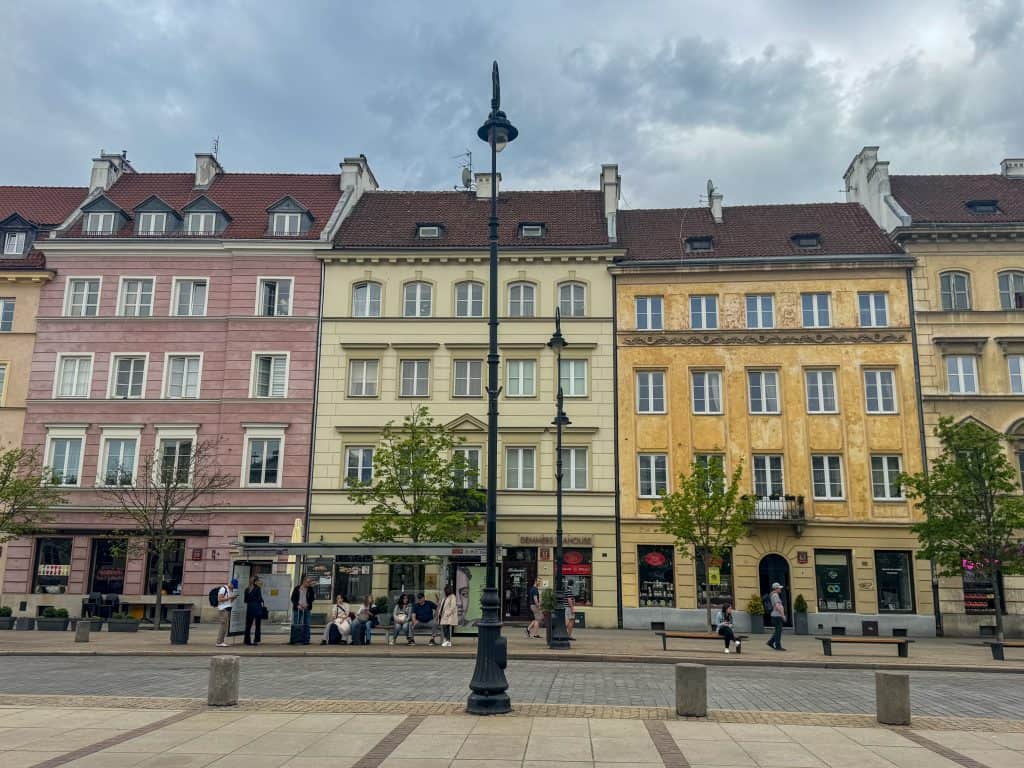
9 Best Things to Do
1. Wander Through Warsaw’s Rebuilt Old Town
At first glance, Warsaw’s Old Town looks like it’s stood for centuries—but nearly everything here was rebuilt from rubble after World War II. Using old paintings, photographs, and fragments of original stonework, the city painstakingly reconstructed its historic core. Today, it’s a UNESCO World Heritage site—a remarkable tribute to Warsaw’s determination to preserve its heritage against all odds.
Begin at Castle Square, where Sigismund’s Column stands tall in front of the Royal Castle. The castle’s richly decorated interiors are open to visitors, but even if you don’t go inside, the square itself is full of life. It’s a vibrant space that has long stood at the heart of Warsaw’s story. From here, stroll along the cobbled streets lined with colourful townhouses until you reach the Old Town Market Square.
At the centre of Old Town Market Square stands the Warsaw Mermaid—sword raised, shield in hand. According to legend, she protects the city and its people, which is why you’ll spot her image throughout Warsaw, from fountains to manhole covers.
I highly recommend joining a walking tour . A guide can help bring the stories to life—many of which are easy to overlook if you’re exploring on your own.
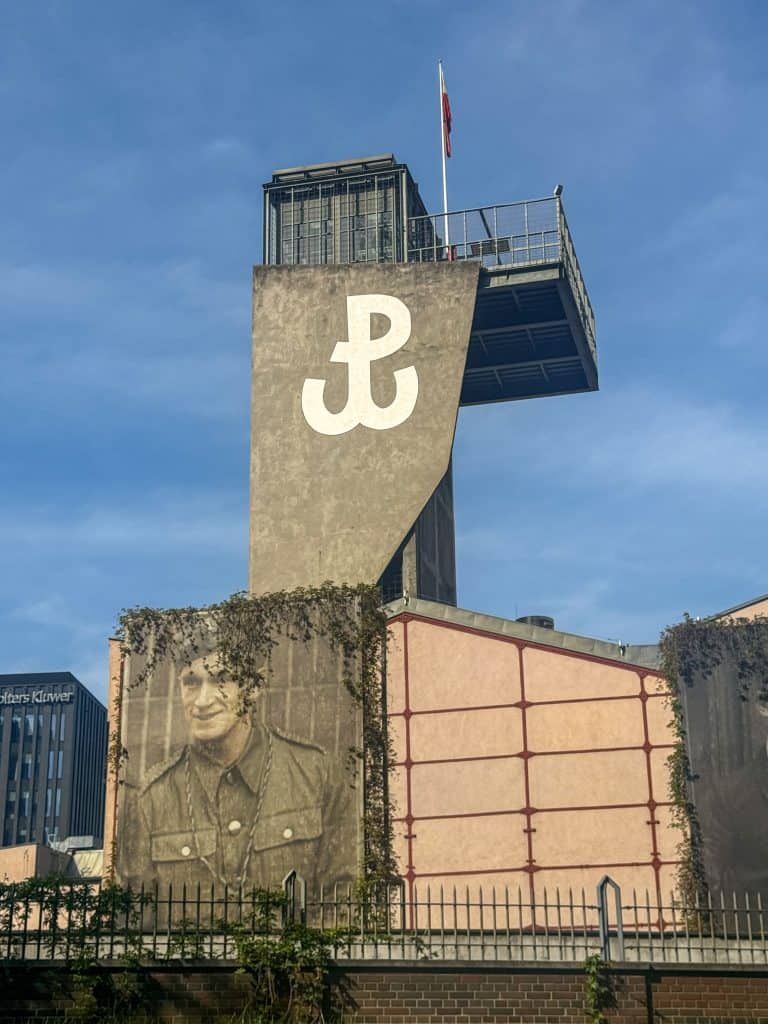
2. Visit the Warsaw Uprising Museum
The Warsaw Uprising Museum tells the story of the city’s 63-day revolt against Nazi occupation in 1944—an act of extraordinary defiance that ultimately led to the destruction of Warsaw. It’s one of the most powerful and important museums in Poland.
The exhibition is immersive and emotionally charged. Highlights include a full-scale replica of a Liberator B-24 bomber suspended from the ceiling, a reconstruction of the sewers used by resistance fighters, and a short 3D film that flies you over the ruins of post-uprising Warsaw. It’s hard to reconcile these images with the city you see today.
What struck me most were the personal stories—firsthand accounts from ordinary citizens who lived through those harrowing months. These voices, more than anything, make the scale of suffering and sacrifice feel real.
We visited on a weekday morning and spent nearly three hours inside. Although the audio guide wasn’t available that day, the museum’s mix of written displays, video interviews, and interactive exhibits provided plenty of context. About halfway through, there’s a retro-themed café that offers a quiet place to pause and reflect.
This museum leaves a lasting impression, drawing you into the harsh reality of what Warsaw’s people endured. It’s a powerful tribute to their courage, resilience, and sacrifice.
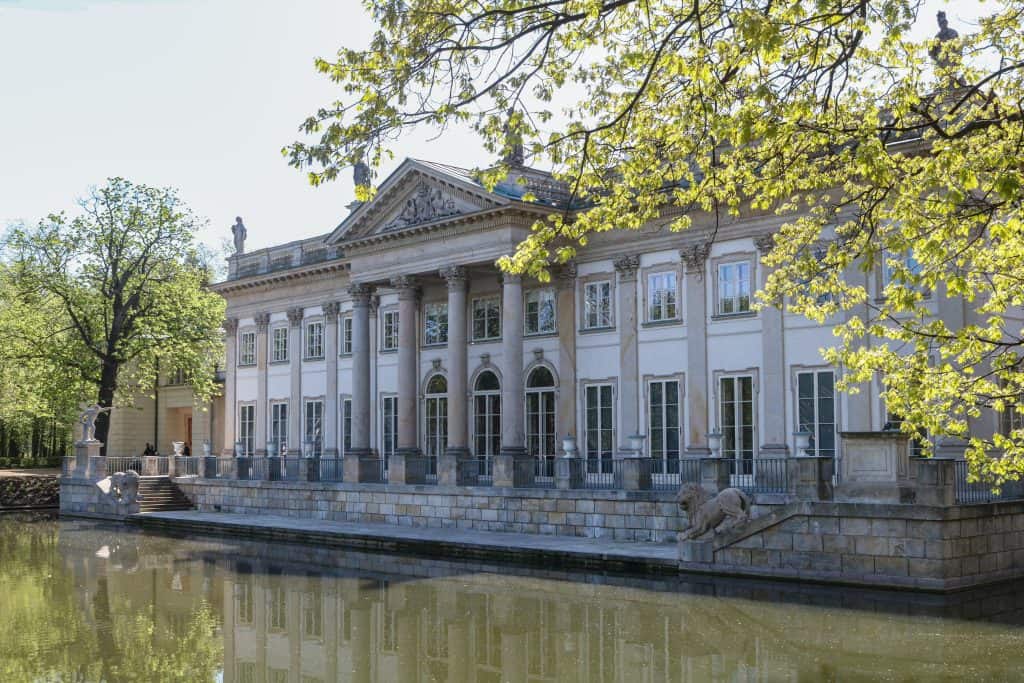
3. Walk the Royal Route to Łazienki Park
One of the best ways to experience Warsaw is on foot along the Royal Route—a historic boulevard that once connected the king’s residences. Today, it links the Royal Castle with Łazienki Park, passing elegant palaces, grand churches, cultural institutions, and lively cafés along the way.
Begin at Castle Square and follow Krakowskie Przedmieście past the Copernicus Monument, the Presidential Palace, and the University of Warsaw. Continue into Nowy Świat, a lively street filled with boutiques and restaurants, before reaching the quieter, tree-lined Aleje Ujazdowskie.
The full walk to Łazienki Park takes around 45 minutes to an hour at a leisurely pace. The route is mostly flat and easy to follow, with plenty of opportunities to pause and take in the atmosphere.
Once you arrive, take time to explore the tranquil gardens of Łazienki Park. With its lakeside palace, free-roaming peacocks, playful red squirrels, and open-air Chopin concerts in summer, it’s one of the loveliest places in the city to slow down and enjoy up some greenery.
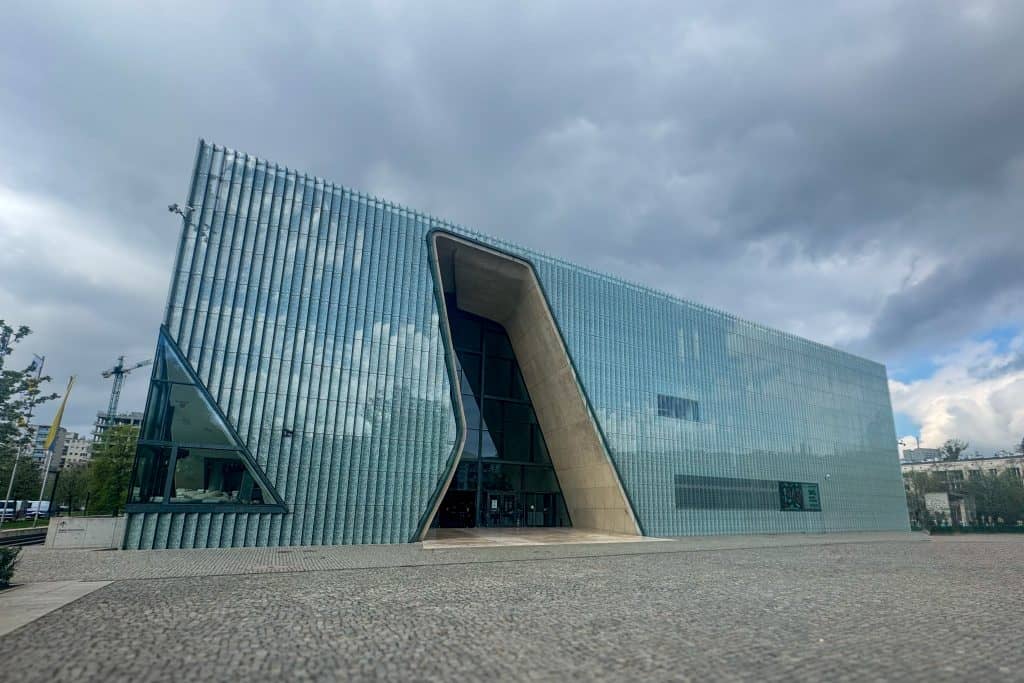
4. Explore the POLIN Museum of the History of Polish Jews
POLIN is one of Warsaw’s most powerful and important museums—chronicling over 1,000 years of Jewish life in Poland, from the Middle Ages through to the Holocaust and the postwar years. Housed in a striking modern building on the site of the former Warsaw Ghetto, it’s an immersive and deeply thought-provoking experience.
The museum uses multimedia displays, reconstructions, rare artefacts, and personal stories to bring this history to life. An excellent audio guide (included with your ticket) allows you to move at your own pace through the galleries.
One section that particularly stood out to me was the story of the 1943 Warsaw Ghetto Uprising. Knowing that deportation meant almost certain death, the fighters chose to resist despite having little chance of survival. We happened to visit on the anniversary—April 19—which made the experience even more poignant.
POLIN also examines the broader history of anti-Semitism, tracing how prejudice developed long before the 20th century. It’s an exceptional museum—thoughtfully designed, informative, and far more engaging than I expected. It not only tells a powerful story, but does so with clarity and a real sense of humanity.
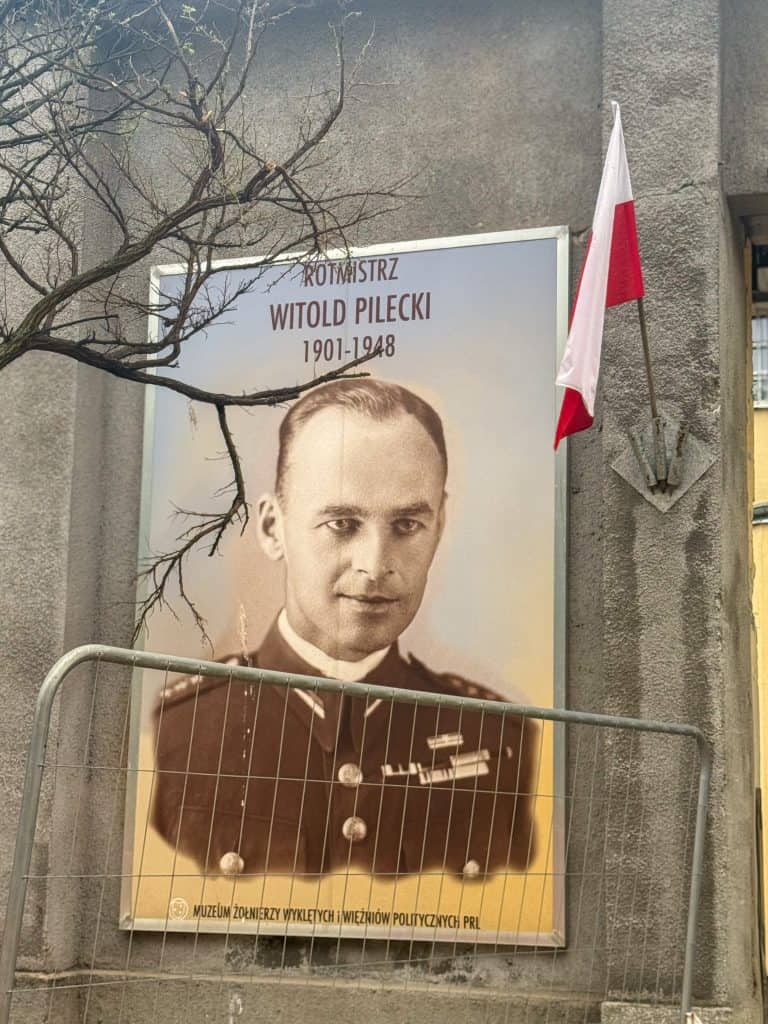
5. Discover the Museum of the Cursed Soldiers and Political Prisoners of the People’s Republic of Poland
This lesser-known museum is housed in the former Rakowiecka Prison—used by the Gestapo during the Nazi occupation and later by Poland’s postwar communist regime.
We joined a free guided tour—just the two of us—and from the moment we stepped inside, the mood shifted. The air felt cooler, the atmosphere heavier. Our guide, a young woman with remarkable knowledge, spoke with quiet intensity that gave weight to every detail.
What makes this museum especially powerful is that many exhibits are displayed inside the original prison cells. We were taken inside small concrete rooms where up to 12 prisoners were forced to sleep side by side on the floor during freezing winters. There was no furniture—just an exposed toilet in the corner, offering no privacy.
The tour also took us through interrogation rooms and solitary confinement cells. Our guide described some of the 312 known methods of physical and psychological torture used here.
While the Gestapo operated the prison during the war, most of the museum focuses on the postwar period—when Poland fell under Soviet control. What makes it especially tragic is that, after enduring years of Nazi occupation, the suffering didn’t end. Instead, it was Poles inflicting cruelty on fellow Poles—targeting those who had resisted the new communist regime.
It’s a sombre and emotionally demanding museum, but also one of the most thought-provoking in Warsaw—especially for anyone seeking to understand the deeper complexities of Poland’s 20th-century history.
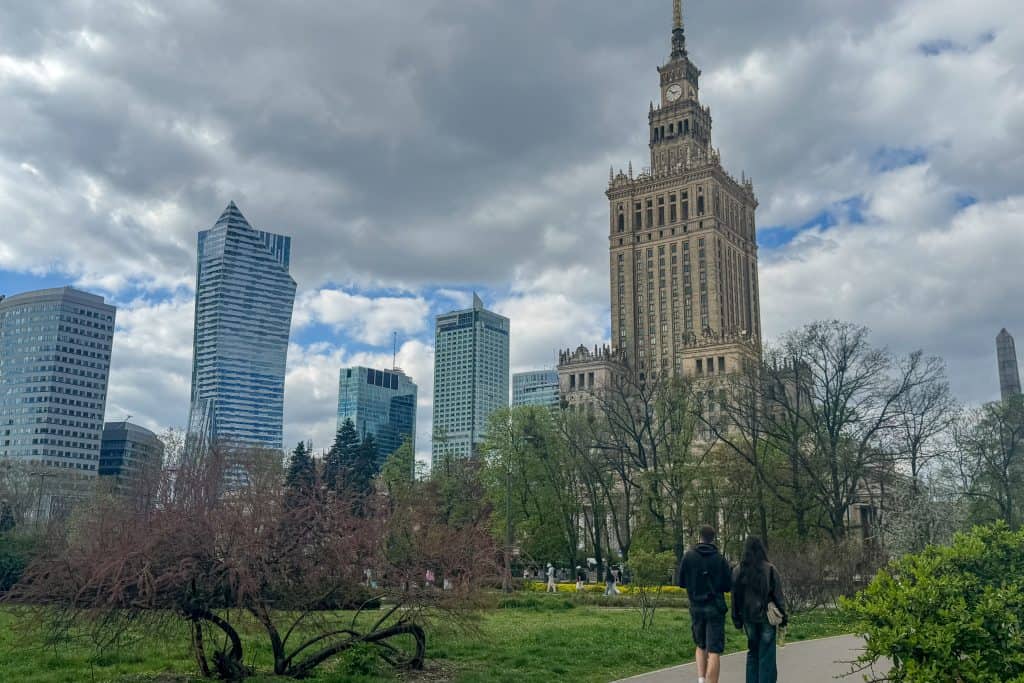
6. Take in the Views from the Palace of Culture and Science
It’s hard to miss—Warsaw’s tallest building, a colossal Soviet-era landmark gifted by Stalin in the 1950s. The Palace of Culture and Science dominates the skyline and still divides opinion. For some, it’s a grim reminder of Soviet dominance; for others, it’s simply an iconic part of the city’s silhouette.
Inside, you’ll find socialist architecture at its grandest and most theatrical. Ride the lift to the 30th-floor terrace for sweeping views over Warsaw—best appreciated on a clear day. The building also houses theatres, exhibition spaces, a cinema, and even a swimming pool (although the latter isn’t open to the public).
It might not be everyone’s favourite, but it’s undeniably striking. If you’re interested in architecture, Cold War history, or the contrasts that define Warsaw, it’s a fascinating place to visit—and the views are some of the best in the city.
7. Cross the River to Discover Praga
On the right bank of the Vistula River, just across from Warsaw’s Old Town, Praga feels like a different city. It’s often described as the most authentic part of Warsaw. Unlike much of the city, Praga escaped the widespread destruction of World War II, so many of its buildings are older, less restored, and more varied in style.
In recent years, the area has started to attract artists, cafés, and small galleries. You’ll see colourful murals, repurposed industrial spaces, and signs of change—but it still feels local and unpolished.
Praga is home to a few standout museums. The excellent Polish Vodka Museum, set in a beautifully restored distillery, explores the history, production, and cultural role of vodka in Poland—ending with a guided tasting.
Nearby, the Neon Museum showcases a collection of vintage neon signs from the communist era. It’s quirky, photogenic, and offers a unique glimpse into PRL-era design.
If you have a sweet tooth, the Wedel Chocolate Factory is another good stop. There are interactive exhibits, plenty of tasting opportunities, and a chance to learn about one of Poland’s most famous confectionery brands.
Praga is best visited in the afternoon, when the museums are open and the area has more life. You’ll find plenty of places nearby to stop for coffee, a drink, or a casual dinner.
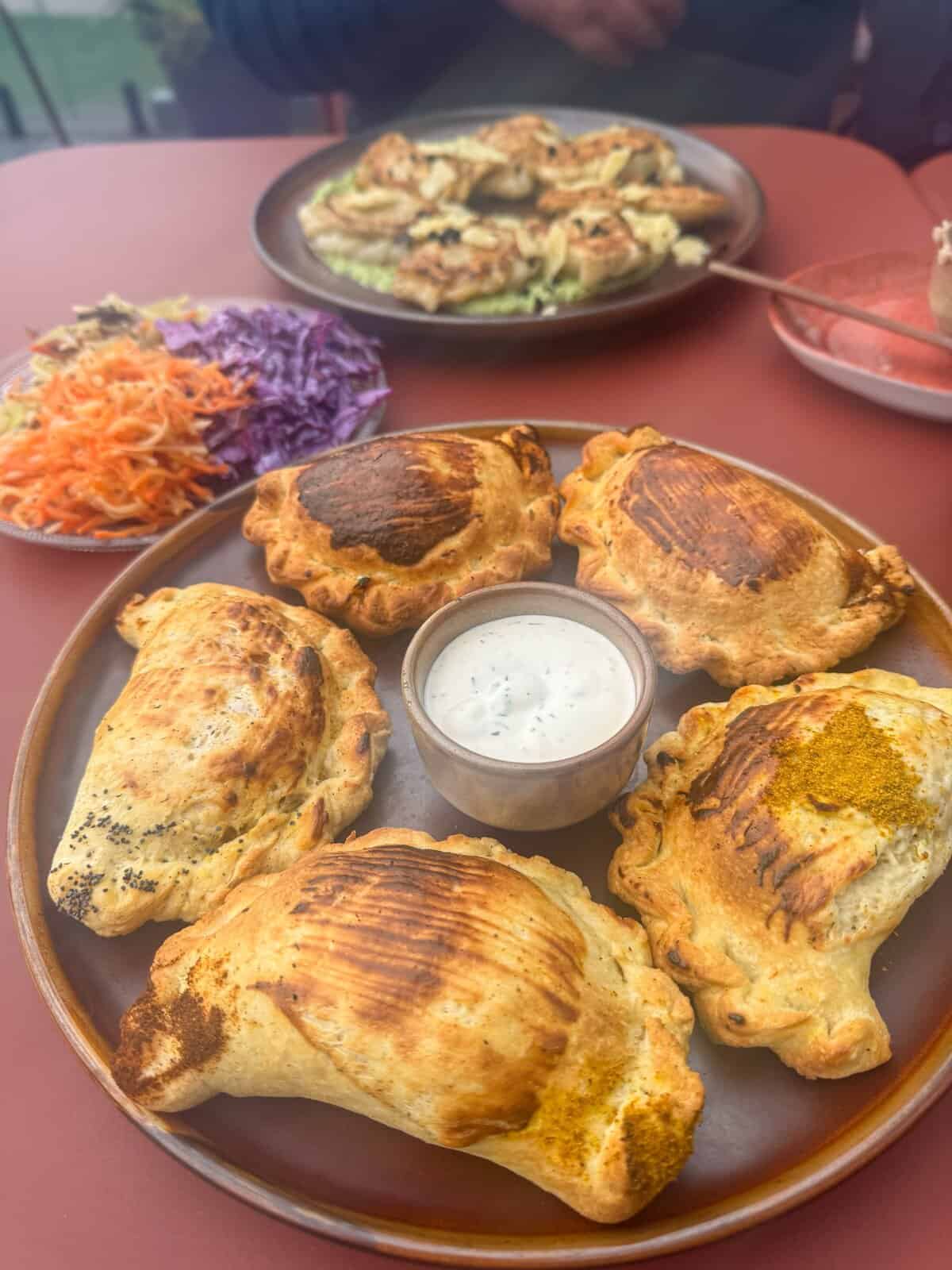
8. Join a Warsaw Food Tour
If you’re looking for a shortcut to understanding Polish culture, food is a great place to begin. A good food tour will introduce you to everyday staples like pierogi (dumplings), bigos (hunter’s stew), and hearty soups—alongside lesser-known regional specialities you might not discover on your own.
I like to book a food tour early in my trip—it’s become part of my ‘formula’ that helps me get the most out of a new destination. It’s not just about what to eat or where to find it. You also hear personal stories from your guide that connect food with family traditions, regional history, and national identity.
It’s one of the most enjoyable and meaningful ways to start exploring Warsaw.
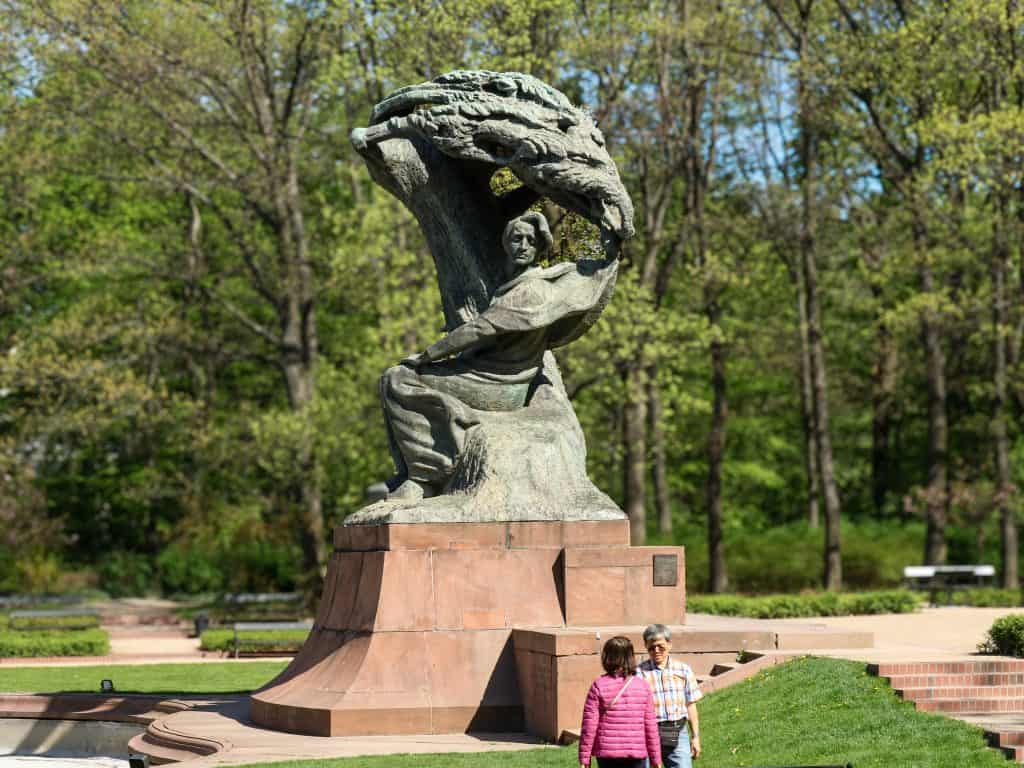
9. Get to know one of Poland’s heroes – Chopin
Warsaw is the birthplace of Frédéric Chopin, and the city doesn’t let you forget it. He spent his formative years here before leaving for Paris at the age of 20. Though he never returned, he remained deeply connected to his homeland—so much so that, after his death, his heart was brought back to Warsaw and now rests inside a pillar of the Holy Cross Church on Krakowskie Przedmieście.
To explore his life and legacy, start at the Fryderyk Chopin Museum. Housed in a baroque palace, this museum tells his story through letters, manuscripts, and personal belongings. It’s modern, interactive, and gives a strong sense of the man behind the music.
If you want to immerse yourself in the music itself, consider booking a live piano recital. Many take place in elegant venues like the Chopin Point salon or the 18th-century Szustra Palace. These small, intimate performances allow you to experience Chopin’s work in a setting not unlike the ones he would have played in.
In summer, free outdoor concerts are held on Sunday afternoons in Łazienki Park, beneath the famous bronze Chopin statue—a peaceful and very Polish way to enjoy his music.
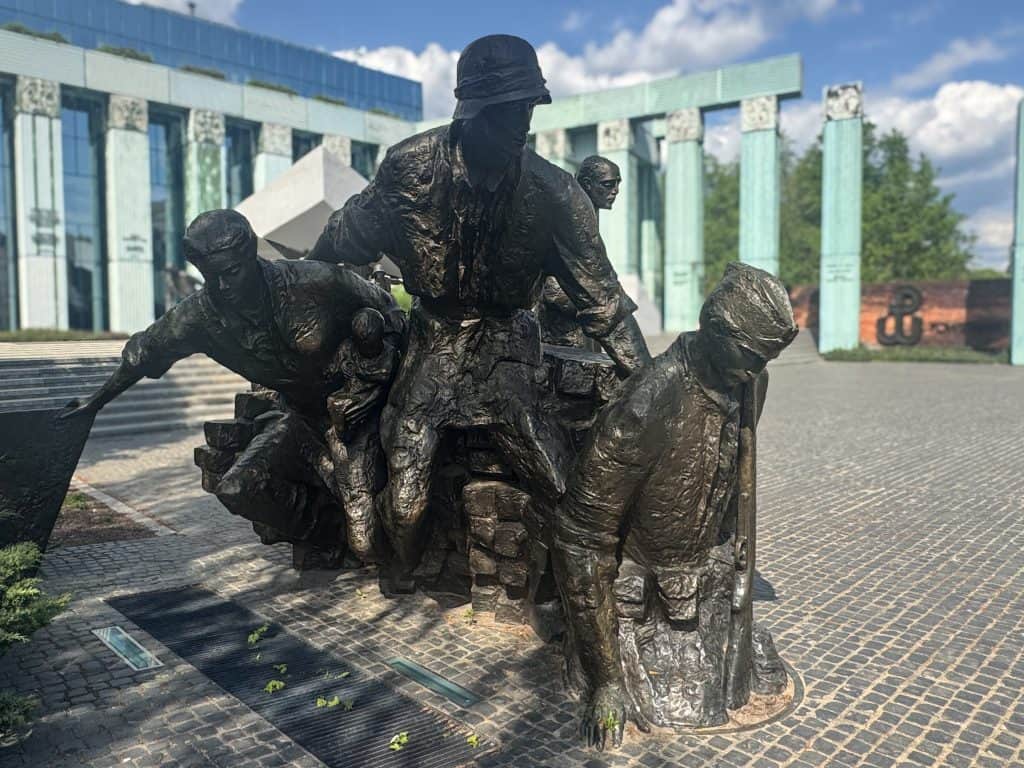
Final Thoughts on Warsaw
After five days in Warsaw, I left with a far deeper understanding of the Polish capital than I’d expected. From its days as a royal seat to its near-destruction in World War II and the hardship of Soviet rule, Warsaw’s story is one of resilience and reinvention. But it’s not just the city’s modern history that leaves a mark. Elegant palaces, leafy parks, and a thriving food and arts scene all add colour and character to the experience.
If you’re planning your own trip and wondering about the best things to do in Warsaw, I hope this guide helps you make the most of your time—and come away, as I did, with a deeper appreciation for this complex and compelling city.
Looking for More Things to Do in Poland?
Check out my travel guides to Kraków and Gdańsk for tips on what to see, where to eat, and how to get the most out of your visit. And if Warsaw’s on your list, don’t miss my guide on Where to stay in Warsaw—it covers the best districts, hotel picks, and accessibility tips for first-timers.
Visiting Warsaw – FAQs
Poland uses the Polish Zloty (PLN).
The language spoken in Warsaw is Polish.
By Air
Warsaw has two airports: Warsaw Chopin Airport (WAW), the main international hub just 8 km from the city centre, and Warsaw Modlin Airport (WMI), about 40 km north, which mostly serves budget airlines. Chopin is well connected, with easy access to the city by train, bus, taxi, or Uber. Modlin is a bit trickier—expect a longer transfer time, typically by shuttle bus or private car.
By Rail
Warsaw is well connected to the rest of Poland by a reliable and efficient rail network. Most trains arrive at Warszawa Centralna, a large and busy station right in the heart of the city. Tickets are easy to book online or via machines at the station, and the system is generally straightforward—though we did get momentarily lost trying to find the exit! Thankfully, a helpful local pointed us in the right direction.
There’s a taxi rank outside, but we found Uber to be significantly cheaper—a contrast to some other Polish cities, where taxis can be similarly priced.
By Bus
Long-distance buses offer a budget-friendly way to reach Warsaw from other Polish cities or even neighbouring countries. Companies like FlixBus and PKS Polonus operate frequent routes, usually arriving at Warszawa Zachodnia (Warsaw West Station). From there, it’s an easy tram or Uber ride into the centre. Buses are generally clean, comfortable, and reliable—though slower than trains.
I’d recommend spending at least two days in Warsaw to see the highlights. That gives you time to explore the Old Town, walk part of the Royal Route, and visit one of the major museums—either the Warsaw Uprising Museum or POLIN.
With three to four days, you’ll get a much better feel for the city. You can visit both key museums, relax in Łazienki Park, take in the views from the Palace of Culture and Science, or explore further afield in neighbourhoods like Praga. It’s also worth allowing time to join a food tour or enjoy a Chopin concert.
And if you have the luxury of even more time, don’t worry—you won’t run out of things to do. Warsaw rewards slow travel, with hidden courtyards, excellent cafés, and lesser-known museums waiting to be discovered.
Warsaw offers a wide range of accommodation options to suit all budgets and travel styles, from sleek hotels and boutique guesthouses to serviced apartments.
For sightseeing, it’s best to stay somewhere reasonably central with good access to public transport. While some major sights—like the Old Town and Royal Route—are walkable, others such as the museums featured in this post are more spread out. You’ll likely use the tram or metro at some point.
Either the Śródmieście or Stare Miasto district would be ideal locations for your first visit.
Compared with Western European capitals, Warsaw offers excellent value for money.
To give you an idea:
• We stayed in a two-bedroom apartment on Plac Konstytucji (Constitution Square) for around $80 USD per night.
• Restaurant meals were typically half the price of what we’d expect to pay in Australia. A main course with drinks usually cost between $32 and $51 USD.
A 4-pack of 500mL beer from the supermarket cost around $5 USD.
At restaurants, a 500mL draft beer was usually about the same—roughly $5 USD.
For Australian travellers, those prices are hard to believe—but very welcome!

